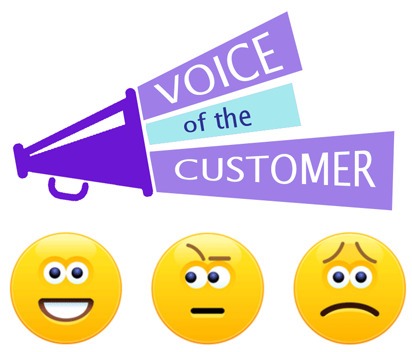How Valuing Voice of Customer Feedback Can Increase the Quality of Your Business in LAQL Way Leadership Management
By Aécio D’Silva, PhD(1), Maécia Moura, MSc(2), Fabiano Moura, MSc(3)
(1) Moura Enterprises, AquaUniversityTucson, AZ 85742, EUA; (2) Signature Dental Partners, Fênix, AZ 85008; (3) Profound Commerce, Inc. Austin, TX 78746.
Every business owner knows that customers are the lifeblood of any company. However, many forget that the customer’s voice is the key to unlocking business success. By always listening to the Voice of the Customer (VoC), businesses can identify their customers’ needs and improve their products and services accordingly. In this blog post, we will explore why it is essential to listen to the VoC and how it can benefit your business.
Listening to the Voice of the Customer – In today’s fast-paced and highly competitive business world, it is more important than ever to prioritize customer feedback. By understanding what your customers want, you can create a product or service that meets their needs, enhance customer satisfaction, and ultimately, boost your revenue. In this regard, the Voice of the Customer (VoC) is critical as it provides valuable insights into customer preferences and expectations.
Listening to the Voice of the Customer – What is the Voice of the Customer (VoC)?
Voice of the Customer (VoC) is a technique used in business administration technologies, such as LAQL Way quality management, to capture customer expectations, preferences, and feedback about a product or service. It can be collected through various methods, such as surveys, feedback forms, and social media platforms. By analyzing and interpreting the VoC, businesses can identify areas where they need to improve, understand customers’ needs, and create a better customer experience.
The VoC can provide businesses with valuable information on their customers’ preferences and expectations, such as their likes and dislikes, opinions, and suggestions for improvement. By analyzing this feedback, businesses can make informed decisions about what changes must be made to their product or service to meet customers’ needs. Additionally, the VoC can help businesses identify areas where they are falling short and where they need to improve.
Listening to the Voice of the Customer – The Benefits of Listening to the VoC
Listening to the Voice of the Customer (VoC) can provide several benefits for businesses. Firstly, it helps businesses to understand customer needs and preferences better. By knowing what customers want, businesses can create a product or service that meets their needs, which can increase customer loyalty and satisfaction. Secondly, VoC can help businesses identify areas where they need to improve, such as customer service, product quality, or delivery times. Improving these areas can increase customer retention and attract new customers.
Furthermore, VoC can help businesses to prioritize their resources effectively. By identifying the most critical areas for improvement, businesses can allocate resources and investments accordingly, which can lead to more efficient operations and higher profits. Finally, VoC can provide businesses with a competitive advantage. By understanding their customers better, businesses can differentiate themselves from their competitors and provide a unique customer experience.
Listening to the Voice of the Customer – How to Collect and Analyze The VoC
The voice of the customer (VoC) is a critical component to the success of any business as it provides valuable insight into customer needs and preferences. Collect and analyze customer feedback, there are several techniques and tools available.
Techniques for Collecting VoC
Companies can use various methods to collect and analyze VoC, such as surveys, focus groups, customer feedback forms, and social media monitoring. These methods can help companies gather a wide range of feedback from their customers, which can be used to identify trends, patterns, and areas for improvement.
One technique for collecting customer feedback is through surveys, which can be conducted through online platforms or in person. Surveys can be customized to focus on specific areas of interest, such as product satisfaction or customer service experience. Another technique is through customer reviews and comments, which can be collected from various sources, such as social media and online reviews.
Techniques for Analyzing VoC
Once the VoC is collected, it is essential to analyze it thoroughly. This involves identifying the most critical issues raised by customers and prioritizing them based on their impact on the business. The data collected can be used to create a PDCA or action plan, including changes to the product or service, training for staff, and improving customer service.
Tools for analyzing customer feedback include sentiment analysis, which uses natural language processing to identify the emotions expressed in customer feedback. Text analytics is another tool, which allows companies to categorize and analyze large amounts of text-based feedback. Customer journey mapping is also useful for understanding the customer experience from start to finish and identifying pain points and areas for improvement.
It is important for companies to select the techniques and tools most relevant to their goals and customer base. By collecting and analyzing customer feedback, companies can make informed decisions and improvements that increase customer satisfaction and drive growth. In the next post, we’ll show the importance and what are sentiment analysis and text analytics tools to learn what your customers’ voices are telling you.
Conclusion: The Voice of the Customer (VoC) is a critical tool for businesses looking to improve their customer experience, increase customer satisfaction, and drive revenue growth. Consequently, it is crucial for businesses to always listen to the Voice of the Customer (VoC) in order to improve their products and services and increase customer satisfaction.
By collecting feedback from customers through various methods such as surveys, feedback forms, and social media, companies can identify areas where they need to improve and understand the needs and preferences of their customers. This allows them to make informed decisions and prioritize their resources effectively, ultimately leading to increased profitability and a competitive advantage in the marketplace. Ignoring VoC can result in missed opportunities for growth and ultimately lead to the downfall of a business. Therefore, in LAQL Way Leadership Management, it is imperative for businesses to always prioritize listening to their customers and acting on their feedback.
References:
(1)Deming, W. Edwards (1986). Out of the crisis. Cambridge, MA: Massachusetts Institute of Technology, Center for Advanced Engineering Study. p. 88. ISBN 978-0911379013. OCLC 13126265.






